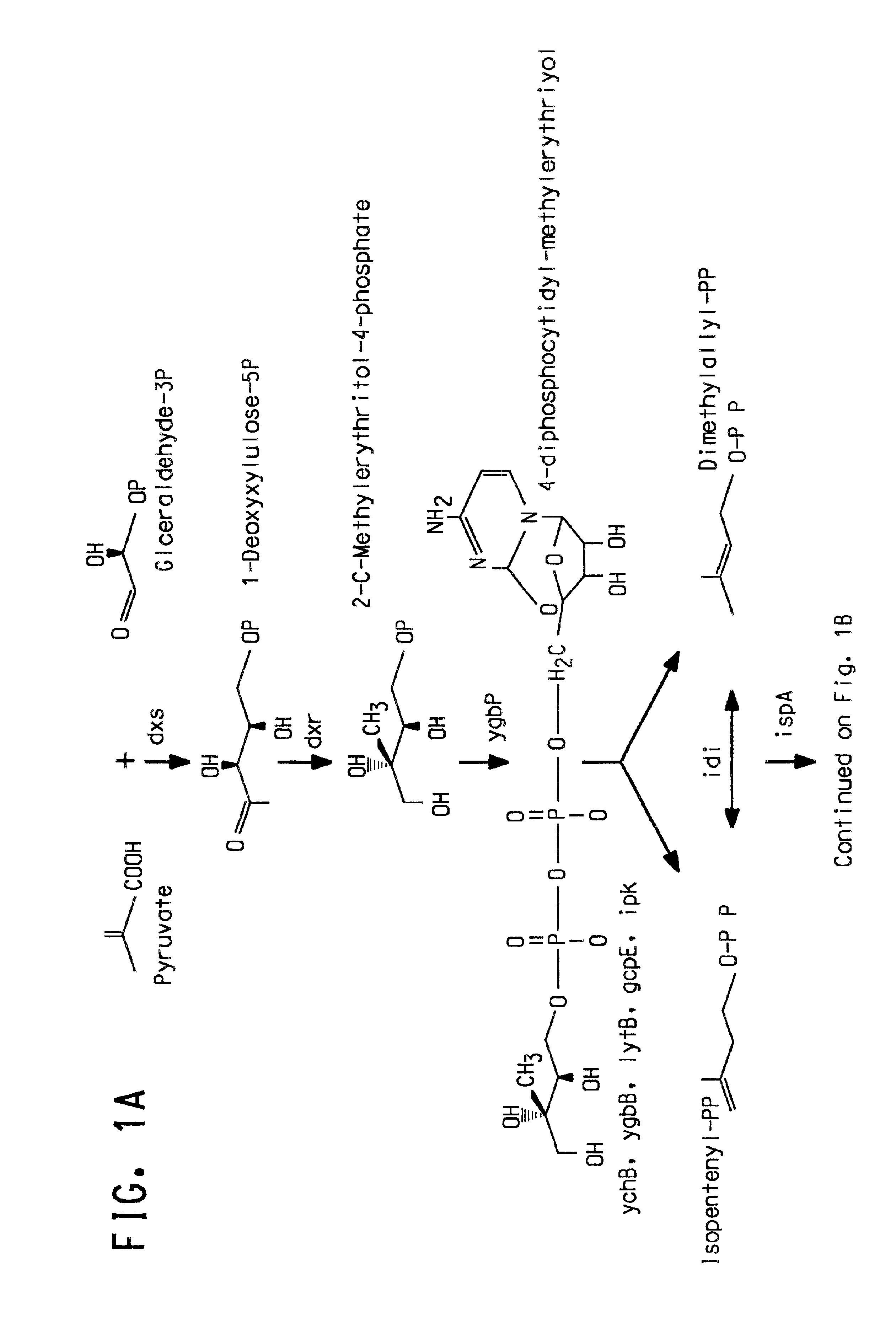Carotenoid production from a single carbon substrate
a carbon substrate and carotenoid technology, applied in the field of molecular biology and microbiology, can solve the problems of high cost of carotenoids, difficult chemically made compounds, and low productivity of carotenoid synthesis in these plants
- Summary
- Abstract
- Description
- Claims
- Application Information
AI Technical Summary
Benefits of technology
Problems solved by technology
Method used
Image
Examples
example 1
Isolation and Sequencing of Methylomonas 16a
[0184]The original environmental sample containing the isolate was obtained from pond sediment. The pond sediment was inoculated directly into defined medium with ammonium as nitrogen source under 25% methane in air. Methane was the sole source of carbon and energy. Growth was followed until the optical density at 660 nm was stable, whereupon the culture was transferred to fresh medium such that a 1:100 dilution was achieved. After 3 successive transfers with methane as sole carbon and energy source, the culture was plated onto growth agar with ammonium as nitrogen source and incubated under 25% methane in air. Many methanotrophic bacterial species were isolated in this manner. However, Methylomonas 16a was selected as the organism to study due to its rapid growth of colonies, large colony size, ability to grow on minimal media, and pink pigmentation indicative of an active biosynthetic pathway for carotenoids.
[0185]Genomic DNA was isolate...
example 2
Identification and Characterization of Bacterial Genes from Methylomonas
[0189]All sequences from Example 1 were identified by conducting BLAST (Basic Local Alignment Search Tool; Altschul, S. F., et al., (1993) J. Mol. Biol. 215:403-410; see also www.ncbi.nim.nih.gov / BLAST / ) searches for similarity to sequences contained in the BLAST “nr” database (comprising all non-redundant GenBank CDS translations, sequences derived from the 3-dimensional structure Brookhaven Protein Data Bank, the SWISS-PROT protein sequence database, EMBL, and DDBJ databases). The sequences were analyzed for similarity to all publicly available DNA sequences contained in the “nr” database using the BLASTN algorithm provided by the National Center for Biotechnology Information (NCBI). The DNA sequences were translated in all reading frames and compared for similarity to all publicly available protein sequences contained in the “nr” database using the BLASTX algorithm (Gish, W. and States, D. J. (1993) Nature G...
example 3
Microarray for Gene Expression in Methylomonas 16a
[0192]All bacterial ORFs of Methylomonas were prepared for DNA microarray. The following Example presents the specific protocols utilized for microarray analysis.
[0193]Amplification of DNA regions for the construction of DNA microarray.
[0194]Specific primer pairs were used to amplify each protein specifying ORF of Methylomonas sp. strain 16a. Genomic DNA (10-30 ng) was used as the template. The PCR reactions were performed in the presence of HotStart Taq™ DNA polymerase (Qiagen, Valencia, Calif.) and dNTPs (Gibco BRL Life Science Technologies, Gaithersberg, Md.). Thirty-five cycles of denaturation at 95° C. for 30 sec, annealing at 55° C. for 30 sec, and polymerization at 72° C. for 2 min were conducted. The quality of PCR reactions was checked with electrophresis in a 1% argarose gel. The DNA samples were purified by the high-throughput PCR purification kit from Qiagen.
[0195]Arraying amplified ORFs. Before arraying, an equal volume ...
PUM
| Property | Measurement | Unit |
|---|---|---|
| temperature | aaaaa | aaaaa |
| temperature | aaaaa | aaaaa |
| temperature | aaaaa | aaaaa |
Abstract
Description
Claims
Application Information
 Login to View More
Login to View More - R&D
- Intellectual Property
- Life Sciences
- Materials
- Tech Scout
- Unparalleled Data Quality
- Higher Quality Content
- 60% Fewer Hallucinations
Browse by: Latest US Patents, China's latest patents, Technical Efficacy Thesaurus, Application Domain, Technology Topic, Popular Technical Reports.
© 2025 PatSnap. All rights reserved.Legal|Privacy policy|Modern Slavery Act Transparency Statement|Sitemap|About US| Contact US: help@patsnap.com



